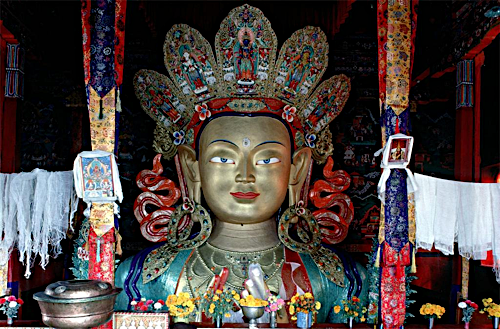Himalayas: An Aesthetic Exploration

The Himalayas are the world's longest and loftiest mountain range. This course will commence with a review of some influential modern and contemporary perceptions of the Himalayas. Thereafter, we will proceed to glean some of the many ways in which the shaping of objects and the crafting of identities are linked in this region today. Subsequently we shall embark on a series of armchair expeditions to recover interconnections between 'art' and 'life' in the Himalayas in centuries past. Traveling in arcs stretching from the Brahmaputra valley in the east up to the upper reaches of the Indus in the west and along axes extending from the sub- montane Terai in the south to the frosty Tibetan plateau in the north, we will repeatedly cross China, Nepal, India, Pakistan, and Afghanistan. Resting at sites sought out by explorers, traders, conquerors, and Hindu and Buddhist pilgrims we will query the distinctive forms, layouts, and functions of temples, monasteries, necropoles, water-structures, and the medley of objects found in them including sculptures, manuscript paintings, gilt skull-cups, and fountains.
Special Opportunities: Students will have the opportunity to examine cloth-scrolls, banners, amulets, metal sculpture and manuscript paintings in the University of Michigan's art and anthropology museums.
Prerequisites: None.
Estimated Cost of Materials: $50-100.
HISTART category for concentration distributions: C. Asia (includes China, Japan, India, South and Southeast Asia, and the Pacific), D. Europe and the US, 1. Ancient, 4. Modern and Contemporary.
Textbooks:
Course Format: Tuesdays and Thursdays, 8:30am – 10:00am interactive lectures delivered by the professor, with occasional student led discussions moderated by the professor. All students make formal presentations on their work-in-progress term papers to their peers./p>